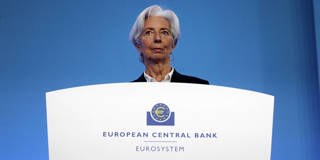
The ECB Has Been Driving EU Inflation
The European Central Bank denies that it bears any responsibility for the eurozone’s current inflation struggles, pointing the finger at COVID-19 and Vladimir Putin. But there is good reason to believe that the ECB contributed significantly to rising prices, including for energy.
MUNICH – Inflation is galloping in the eurozone, as the euro tumbles. In August 2022 annual eurozone inflation reached 9.1%, and rates exceeding 20% are now being registered in the Baltic countries. In May 2021, a euro would have cost you more than $1.20; on September 27, you could buy one for $0.96. Is the European Central Bank to blame?